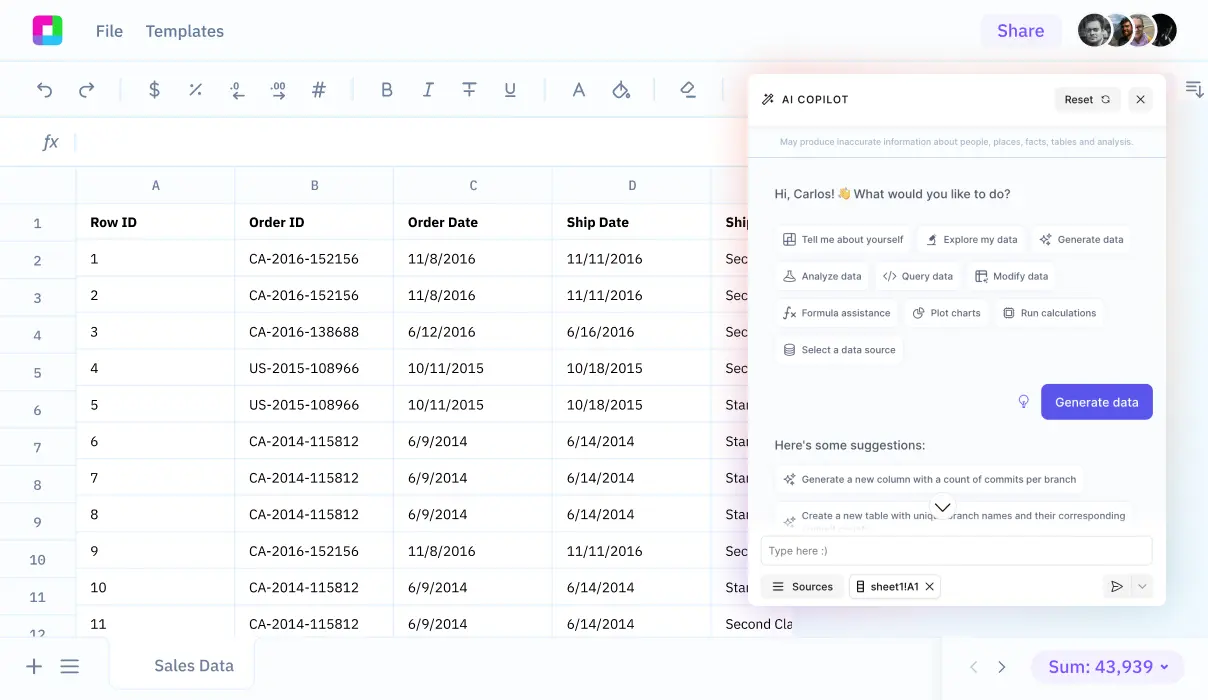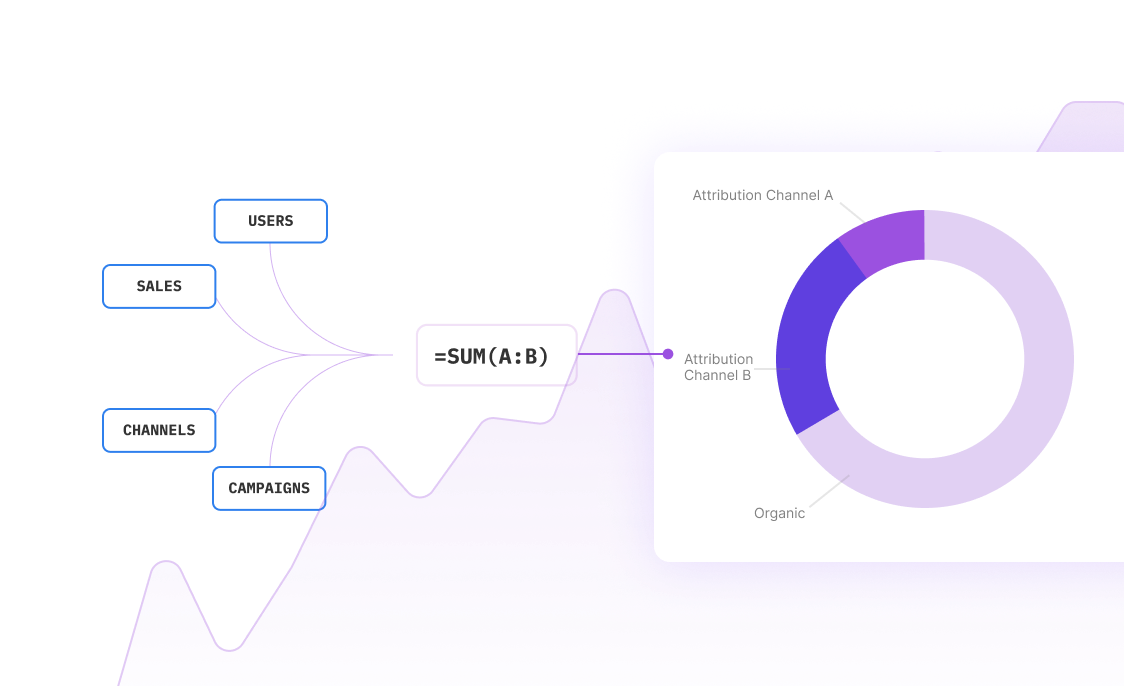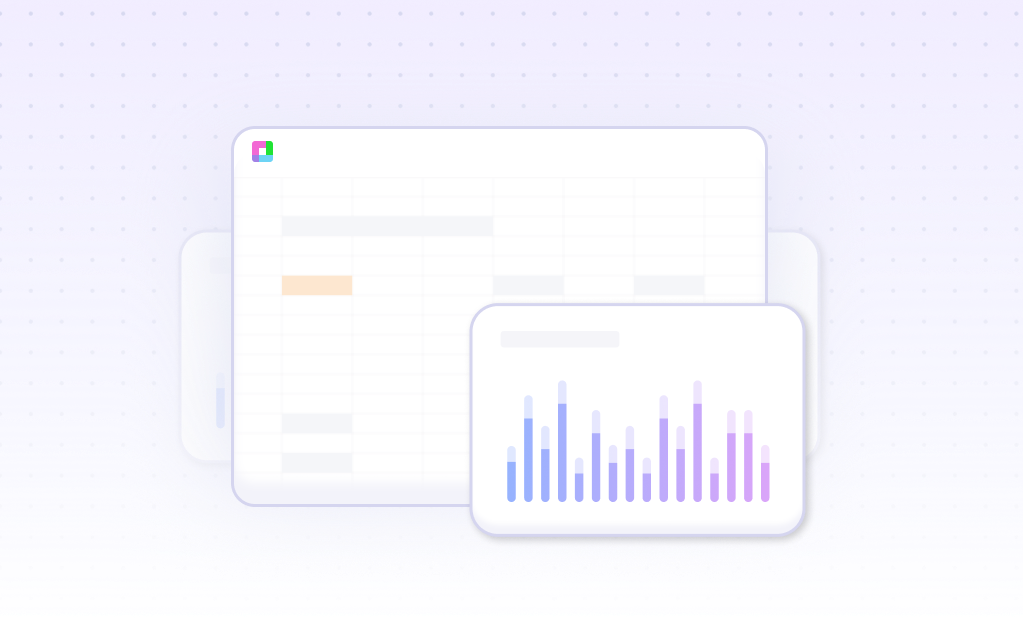
Introduction
Earnings per share (EPS) analysis traditionally requires Excel expertise and manual data input. Excel calculates EPS by dividing net income by outstanding shares, requiring precise input of net income, preferred dividends, and common shares outstanding. While Excel provides reliable EPS calculations, modern AI alternatives streamline this process.
Sourcetable offers an AI-driven approach to EPS analysis. This platform automates spreadsheet tasks, generates essential formulas like SUM and VLOOKUP, and provides advanced data analysis through SQL and Python integration. Its AI capabilities extend to automated data cleaning and interactive chart generation, making financial analysis accessible to users of all skill levels.
Learn how Sourcetable combines Excel's functionality with AI-powered insights for efficient EPS analysis at sourcetable.com/signup.
Why Sourcetable Is Superior for EPS Analysis
Sourcetable revolutionizes EPS analysis by combining Excel's familiar A1 notation with cloud computing power and AI assistance. Its ability to handle multi-gigabit datasets and perform instant calculations on 3D and 4D data sets it apart from Excel's limitations with large files.
Performance Advantages
While Excel macros slow down during compute-intensive EPS calculations, Sourcetable leverages cloud computing to execute these operations instantly. The platform's 500+ formulas and functions, coupled with database integration capabilities, enable seamless analysis of complex financial data from Postgres, MySQL, and MongoDB.
AI-Powered Analysis
Sourcetable's AI capabilities transform financial analysis through natural language processing. Users can query data without complex formulas, shifting focus from manual calculations to strategic planning and value creation. This AI assistance delivers faster, more accurate results at scale.
Enterprise-Ready Features
Unlike Excel, Sourcetable connects with over 100 business applications and requires no coding expertise for setup. Its design caters to analysts and finance professionals, providing an affordable reporting solution that maintains familiar spreadsheet functionality while extending capabilities through AI and cloud computing.
Benefits of EPS Analysis Using Sourcetable: A Modern AI-Powered Approach
Why EPS Analysis Matters
EPS (Earnings Per Share) analysis provides crucial insights into company profitability and valuation. As a key component of the P/E ratio, EPS helps investors determine if a company is reasonably valued. The metric also enables evaluation of company efficiency through return on equity (ROE) calculations.
Advantages of Using Sourcetable for EPS Analysis
Sourcetable's AI-powered platform streamlines EPS analysis with powerful data processing capabilities and intuitive visualization tools. The software efficiently handles CSV financial data files while maintaining reliability and speed. Its organizational features and AI assistant make complex EPS calculations straightforward.
Sourcetable vs Traditional Spreadsheets
Unlike traditional spreadsheets, Sourcetable's AI integration enables natural language processing for faster data analysis and visualization. Users can quickly transform raw EPS data into meaningful insights, reports, and automations. The platform's powerful analytical tools and user-friendly interface make it an optimal choice for modern EPS analysis.
EPS Analysis Examples with Sourcetable
EPS (Earnings Per Share) analysis in Sourcetable provides essential insights into company profitability and stock valuation. The basic EPS calculation follows the formula EPS = Net Income / Outstanding Shares.
Profitability Analysis
Sourcetable enables efficient analysis of a company's EPS to evaluate how effectively it uses capital to generate profits. By comparing historical EPS data, analysts can identify trends in financial performance and operational efficiency.
Stock Valuation Analysis
The platform facilitates P/E ratio analysis through the formula P/E = Share Price / EPS. This metric helps investors determine if a stock is overvalued by showing how much they're paying for each dollar of earnings.
Comparative Analysis
While absolute EPS values may not provide meaningful insights alone, Sourcetable enables analysts to compare EPS figures against stock prices and P/E ratios. This analysis helps determine relative stock value and investment potential.
Enterprise Value Analysis
Sourcetable supports comprehensive EPS analysis alongside Enterprise Value calculations, enabling deeper insights into company valuation through ratio analysis, DCF modeling, and ROE calculations.
Use Cases for EPS Analysis with Sourcetable
Financial Statement Analysis |
Sourcetable automatically collects and validates financial statement data to calculate EPS ratios. The platform interprets and visualizes trends in earnings performance, enabling more informed investment decisions. |
Sales Trend Forecasting |
AI algorithms analyze historical sales data to predict future revenue trends. These forecasts help estimate upcoming EPS figures using the formula |
Market Sentiment Impact |
Natural Language Processing analyzes market sentiment from financial documents and social media. This data helps predict how public perception affects EPS performance. |
Customer Behavior Analysis |
AI-powered customer segmentation and churn prediction identify patterns that impact revenue. These insights help forecast changes in earnings that affect EPS calculations. |
Frequently Asked Questions
What is EPS analysis?
EPS (Earnings Per Share) analysis is a metric used to value companies by dividing net income by total outstanding shares. There are five types: Reported EPS (based on GAAP), Ongoing EPS (based on ordinary income), Retained EPS (used for debt payment), Cash EPS (resistant to manipulation), and Book Value EPS (calculates equity per share).
How do you calculate EPS in Sourcetable?
To calculate EPS in Sourcetable, use the balance sheet and income statement to find net income and number of common shares outstanding. Divide net income by the number of shares. For more accuracy, use a weighted average of common shares over the reporting term, or for simplicity, use the period-end number of shares.
What are the advantages of using Sourcetable for EPS analysis?
Sourcetable allows you to create structured tables and summary tables more easily than manual methods, which can help streamline the EPS analysis process.
Conclusion
Excel offers a straightforward method for calculating EPS using the formula =B6/B5, requiring only net income, preferred dividends, and outstanding shares as inputs. However, Sourcetable provides an AI-powered alternative that combines spreadsheet functionality with natural language processing, eliminating the need for Excel expertise.
For comprehensive EPS analysis, analysts can leverage Sourcetable's AI assistant to gather earnings transcripts, analyze financial data, and generate key insights. The platform's integration with over 100 data sources and ability to process Python and SQL code enables deeper financial analysis beyond basic EPS calculations.
Ready to streamline your EPS analysis with AI-powered tools? Try Sourcetable today to experience the future of financial data analysis.
Recommended Analysis Guides
Connect your most-used data sources and tools to Sourcetable for seamless analysis.
Frequently Asked Questions
If you question is not covered here, you can contact our team.
Contact Us





